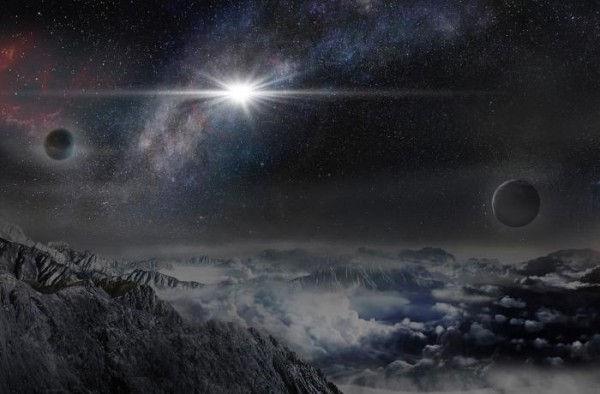By Ana Verayo, | December 13, 2016

An artist's impression of the record-breakingly powerful, superluminous supernova ASASSN-15lh. ( Beijing Planetarium / Jin Ma)
Astronomers recently discovered a dying star, exploding into one of the brightest supernovas ever detected. The explosion was so bright that it overshadowed the luminosity of the entire Milky Way galaxy. New research suggests that this ultra-bright flare is a result of a rare cosmic explosion caused by a supermassive black hole devouring a smaller star.
Like Us on Facebook
According to astronomer Subo Dong from the Kavli Institute for Astronomy and Astrophysics in Peking University, China, the explosion and the amount of energy emitted by this supernova is mysterious since it is challenging to explain how this immense amount of energy radiated beyond the cosmos.
This extremely bright and powerful supernova known as ASASSN-15lh is now being observed by scientists in an attempt to link it with a Tidal Disruption Event (TDE).
This cosmic event involved powerful gravitational forces from a supermassive black hole sucking in a nearby star. It stretched the stellar mass into "spaghetti" shaped material and finally ripped it into pieces with massive explosions.
According to Giorgos Leloudas from the Weizmann Institute of Science, after 10 months of observing this supernova, researchers have concluded that this not just any extraordinarily bright supernova. The results reveal that this event was caused by a supermassive black hole obliterating a low mass star.
Due to the black hole's extreme tidal forces, the doomed star was ripped into bits that collided with each other at high speeds before it was devoured by this black hole. This cosmic collision was so powerful that it was seen from 3.8 billion light years away, reaching Earth.
Scientists say that a supermassive black hole does not always cause this type of luminosity during an explosion. The team suggests that this could be a fast-spinning black hole also known as Kerr black holes.
"Even with all the data we collected, we cannot confirm 100 percent that this ASASSN-15lh event is a tidal disruption event, but it is the most likely explanation for this," Leloudas added.
This new study will be published in Nature Astronomy in January 2017.
-
Use of Coronavirus Pandemic Drones Raises Privacy Concerns: Drones Spread Fear, Local Officials Say

-
Coronavirus Hampers The Delivery Of Lockheed Martin F-35 Stealth Fighters For 2020

-
Instagram Speeds Up Plans to Add Account Memorialization Feature Due to COVID-19 Deaths

-
NASA: Perseverance Plans to Bring 'Mars Rock' to Earth in 2031

-
600 Dead And 3,000 In The Hospital as Iranians Believed Drinking High-Concentrations of Alcohol Can Cure The Coronavirus

-
600 Dead And 3,000 In The Hospital as Iranians Believed Drinking High-Concentrations of Alcohol Can Cure The Coronavirus

-
COVID-19: Doctors, Nurses Use Virtual Reality to Learn New Skills in Treating Coronavirus Patients







